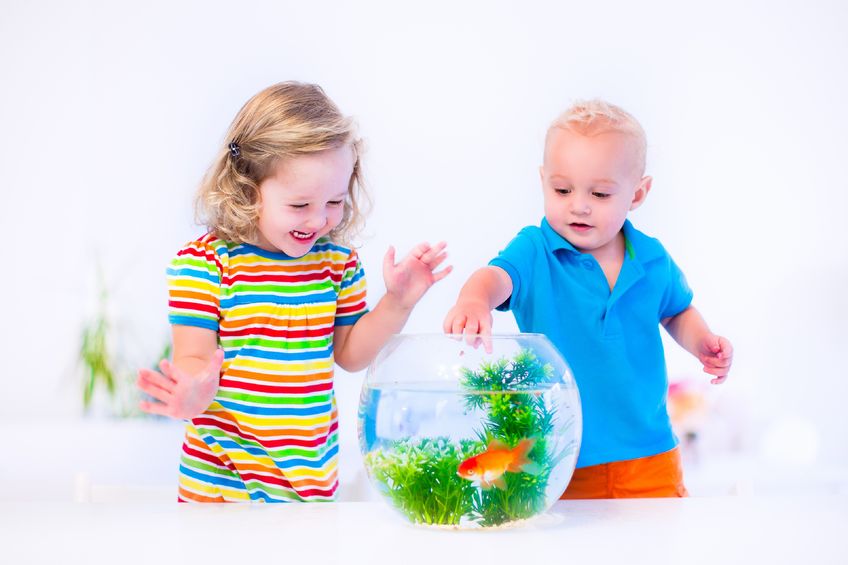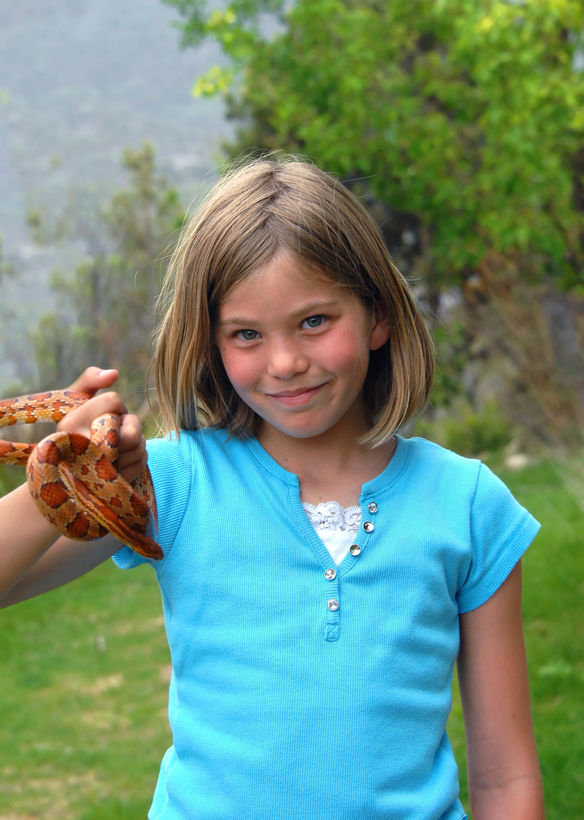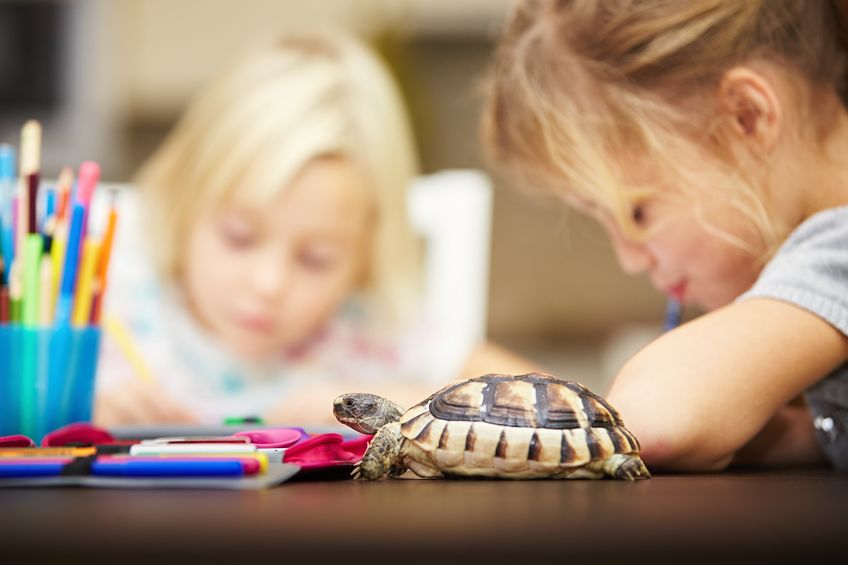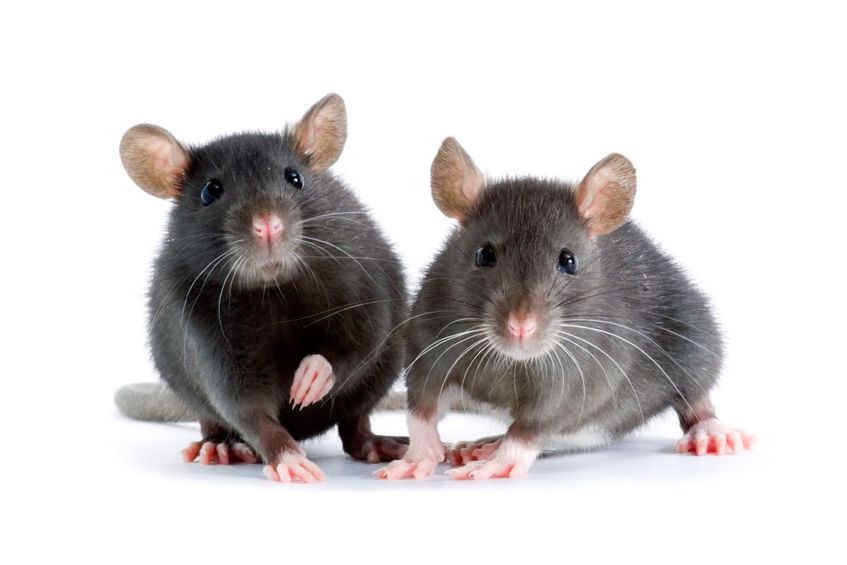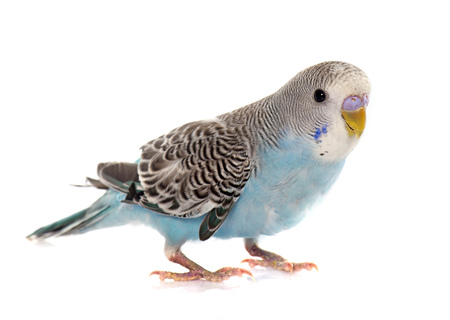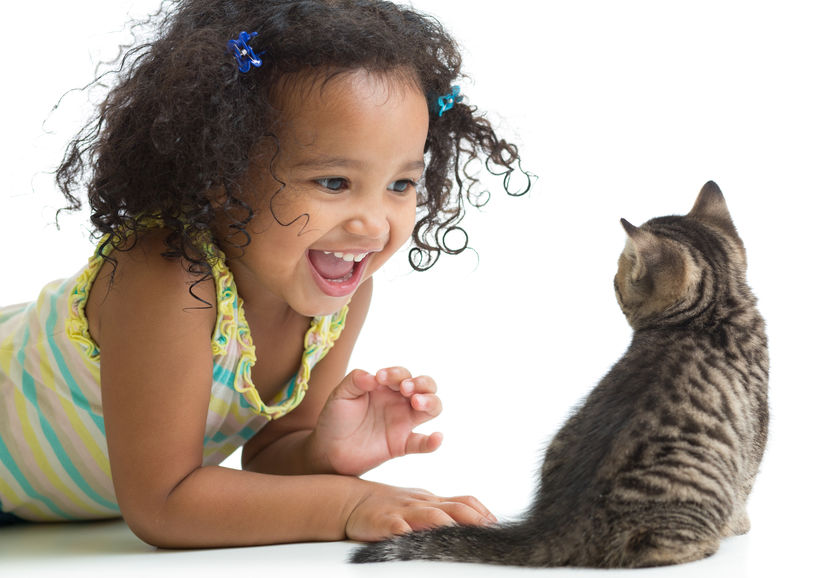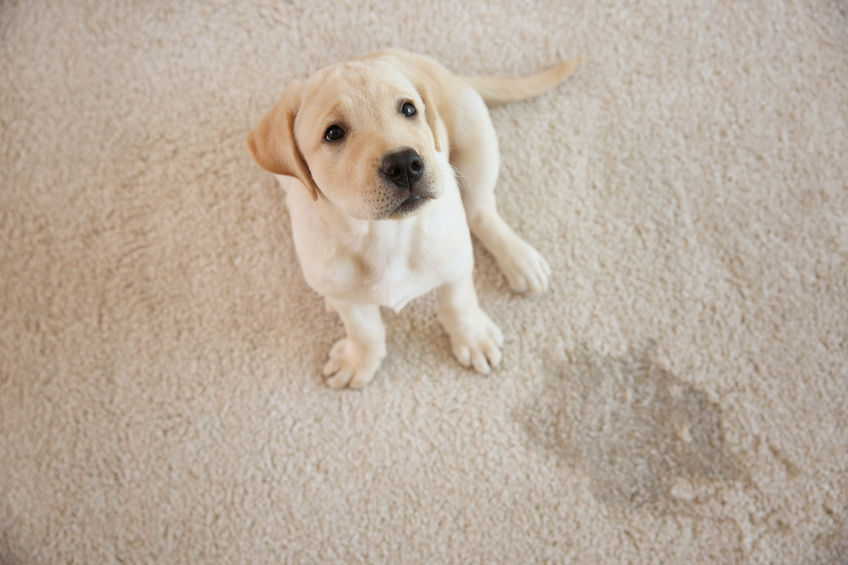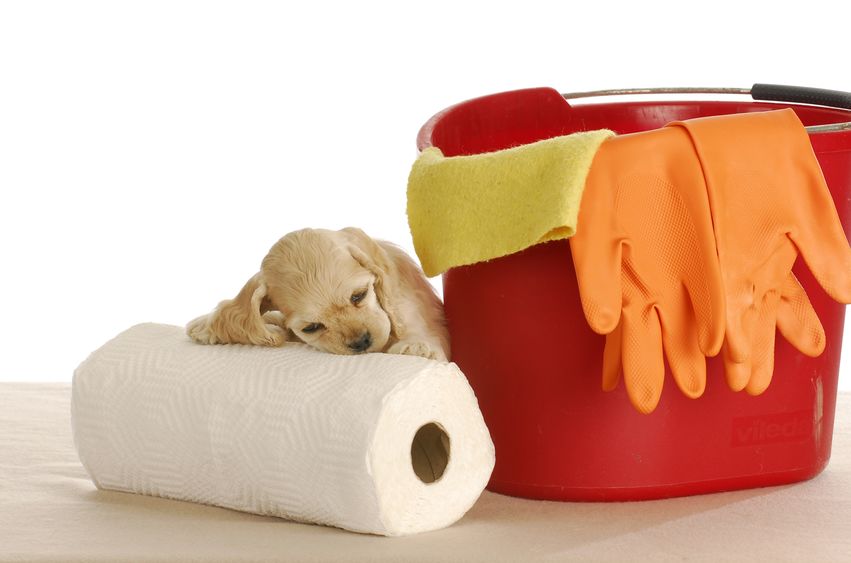Easy Pets For Kids
Easy pets for kids. If you get a pet for a young child, realize that it is truly your pet. Don't go into the situation with false expectations. That's not fair to the kid or the animal.
For best results, it's crucial to consider your child's age when choosing a pet. Younger children are best suited for easy pets such as fish, reptiles and snakes, rats, mice and other rodents, small birds, or cats.
Here's a quick look at the expenses, maintenance requirements, and lifespan of these easy pets to help you make the best choice for your child's first pet.
Easy Pets for Kids Are Low Maintenance Pets
These pets are a great choice for parents who are looking for low-maintenance options. They don't require much nurturing or special care, and they're not demanding in terms of grooming or exercise.
They simply need the basics: food, water, and shelter.
These are good starter pets. They also offer the least payback in terms of returning love and affection.
Freshwater Fish
Most freshwater fish are affordable to buy and maintain, especially after the initial investment in a tank or bowl and accessories. It's important to note that some fish are hardier than others, so it's best to do your research before making a purchase.
For small kids, go for inexpensive, durable fish like goldfish. You don't want floaters to start off your child's pet career.
Go for a solitary goldfish or beta in a simple bowl. If that's a hit, you can move on to an aquarium. Lighted aquariums can even function as nightlights in a child's bedroom.
Maintenance will be simply feeding once or twice a day and cleaning the bowl once a week. If you keep the aquarium away from direct sunlight, algae will grow more slowly and won't need to be cleaned as often.
Easy Pets for Kids: Reptiles and Snakes
Little boys (and some little girls) love lizards and snakes. Most moms don't. If your kid is going to have a lizard or snake, be sure there's an adult in the house who's willing to handle it.
You've got to have that backup person with pets.
In other words, Dad is the go-to guy on this one.
Put the reptile in an aquarium with a locked top. You don't want Timmy taking it out without your supervision.
Avoid large snakes, such as pythons, that might ingest small children.
Research reptiles and their living requirements. Some require live (shudder) food. If you are determined, however, at least get a snake trained to accept frozen mice instead of the live, running-around variety.
Then, all you have to do is heat (to room temperature) and serve.
Some reptiles, like iguanas, grow to five feet long and can be hazardous to other pets. Some (such as pythons) can grow to 13 feet long and can be dangerous to everyone.
Remember to ask how large the reptile will be in adulthood. 'Nuff said.
Even though reptiles are relatively sturdy, they are still living creatures. Never let young children handle them unsupervised. Make sure you choose a tame reptile that does not try to bite.
Good lizard choices are a bearded dragon or a gecko. Good snake choices include a corn snake, a rat snake, or a king snake.
While reptiles and snakes are easy pets for kids, they have needs you'll want to consider before bringing one home: a tank, lights, water, and food.
Lizards need places to hide and things to perch on. Tropical or desert reptiles will also need a heat source, which is not cheap.
For example, the bearded dragon requires a 10-gallon terrarium with a screen top the first year and a 40-gallon terrarium as he grows (very, very fast) up to 18 inches.
Many reptiles are omnivores, which means they eat fruit, vegetables, steak, and mice as well. Feeding them is not a simple matter of dropping in some pellets each day.
Reptiles don't need a lot of exercise (though if you released one near me, I would get a lot of exercise), and they don't need a lot of attention.
Figure out 15 - 30 minutes daily to feed them and about an hour a week to clean the tank.
Tortoises and Turtles
Tortoises and turtles are other good reptile choices. Turtles are amphibians, and tortoises are land creatures. Make sure you provide the right environment for your species.
Turtles can be quite affectionate and are quite long-lived—30 to 40 years for the box turtle.
Even though they look sturdy, do not drop them because doing so could injure their shells or internal organs. Tortoises, in particular, should not be handled often.
Lowest Maintenance Easy Pets For Kids
Rodents like rats, mice, gerbils, and hamsters make sweet, low-maintenance, easy pets.
They are small, furry, and cuddly, and they happily stay in their cages when the kids aren't playing with them. They make good starter pets.
Other advantages? They are quiet, not messy, and relatively easy pets to care for. They are also usually inexpensive to buy and maintain.
Rats and Mice
First, you should know that mice are not baby rats. Two different species. Two distinct personalities.
Rats are especially intelligent and friendly despite their nasty-looking tails. These are easy pets for kids.
Mice are cute and fun to watch in the cages but squirmy and nippy for holding and loving.
If you want a love bucket, get a rat. Hold them at the store, and if the rat or mouse is a nipper, request another one. Also, the younger you get them, the easier they are to tame and bond with.
Male or female? Good question. Male rat urine can be a bit smelly, plus males will mark territory with a drop of urine - a drawback if you let them out a lot.
On the other hand, males are a lot calmer and more loving. If you change the litter at least once a week, the smell should not be an issue.
You'll need a special place for the rat cage. Shavings can be messy. And the cages take up a lot of room.
Each rat requires a minimum of two cubic feet. So, if you had a rat couple, that would mean a cage 2 feet by 2 feet by 2 feet.
Rats need to be let out to run around for at least a few minutes each day. You (or the kid) will need to supervise this outing, as they like to nibble through telephone cords and electrical wires.
And, of course, you don't want them lost in your walls or closets, either. Rats live two to four years, and mice one to three years.
Other Rodents to Consider
- Hamsters: These guys need extra Vitamin C. They can bite, and they're more vocal than most rodents. They are best kept alone. They are nocturnal, may be a bit sleepy during the day, and more active than you would like at night. They live for 2 or 3 years.
- Gerbils: These are small but fun, easy pets. Not as intelligent or cuddly as rats. They are happier in pairs, so get a couple. They live for 2 to 3 years.
- Guinea pigs: Guinea pigs make sweet, gentle easy to take care of pets. Get a pair of guinea pigs. The guinea pigs will need a large cage, and a special diet of hay, vegetables, and Vitamin C. Guinea pigs can live 5 to 7 years.
Small Birds
Birds are usually not suitable pets for kids under the age of 8. Kids below this age aren't gentle enough to properly care for them.
Young kids dart about and alarm birds. Small birds, however, make excellent pets for older children.
If you buy a hand-raised bird, it should bond readily with its new owner and be relatively tame if you handle it regularly and gently.
Small birds are easy pets because they are generally confined to the cage and cannot wreak too much havoc.
You only need to change the papers in the cage each day and replenish its food and water. You'll need to do a more thorough cleaning about once a week.
Cockatiels and parakeets are excellent choices. The smaller birds, such as finches and canaries, are mainly for watching, not petting.
Cats
In my prejudiced mind, cats are the perfect pets. They are sweet and cuddly, and they're low-maintenance—you can go away for a weekend and just leave out food and water for them.
They're not messy—indeed, they are fastidious and will look at you in dismay if you neglect to clean their litter boxes regularly.
Of course, they have their drawbacks. They shed. A lot of people are allergic to them.
And if you don't provide alternate places to scratch, such as a cardboard or carpeted scratching post, they can literally shred furniture and floor coverings.
They are relatively long-lived (about 15-20 years), and if you keep them indoors, they are usually healthy animals.
Don't get kittens for small children. Cats between 1 and 3 have all the kitten attributes but are a bit hardier and can quickly escape rough little hands.
Be careful about introducing a new kitten into a house with another cat or dog.
Before You Agree to a Pet
Before you agree to a pet, have a serious talk with your child. Discuss the costs and responsibilities the pet entails. Discuss who's going to do what and when (see Pet Chores for Kids by Age).
Discuss consequences for neglecting a pet, and follow through with them. Draw up a contract spelling out:
- What kind of care the pet will need. Set times each day for watering, feeding, etc. Spell out how often cages will be cleaned and when.
- How the pet will affect his life and schedule.
- When he will take care of the pet.
- The costs associated with the pet.
- How he can help offset costs.
- Clean Home
- Family Pets
- Easy Pets for Kids
